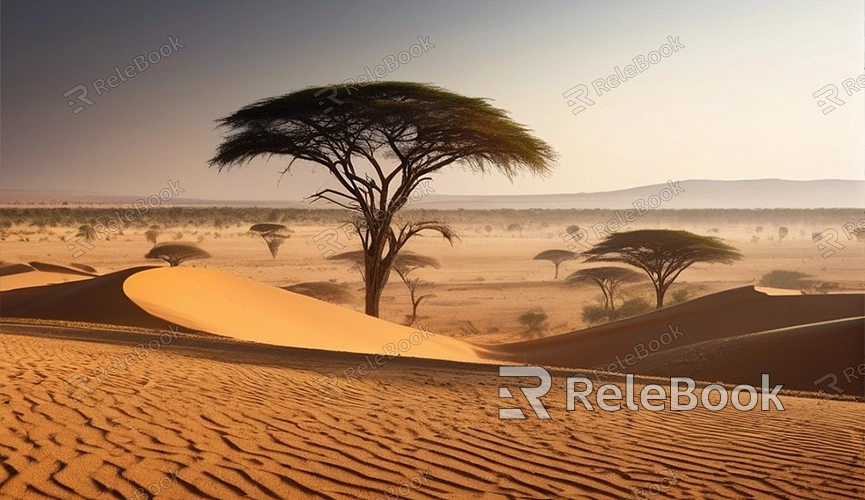Desert Sand Texture in Blender
Desert sand texture is a design element used to simulate the surface texture and feel of sand in desert regions. In Blender, applying desert sand texture can give 3D models the distinctive appearance and texture of deserts, enhancing their desert ambiance and realism. It's mainly used to enhance the realism and visual depth of scenes. The texture of desert sand is particularly suitable for natural scene modeling, environmental design, and visual effects production.

Here's how to use this 3D texture in Blender, for your reference:
1. Import Model: Import the model that requires desert sand texture application into your Blender project.
2. Import Texture: Obtain desert sand texture materials, import them into Blender, and apply them to the model's surface.
3. Adjust Mapping: Based on the model's size and shape, adjust the texture mapping to achieve a natural effect on the model's surface.
4. Adjust Material Parameters: According to your needs, adjust material parameters such as color, roughness, etc., to achieve the desired desert sand effect.
5. Add Detail: Adjust texture detail parameters to increase the texture and feel of the desert sand surface, making it more realistic.
Different parameter adjustments yield different rendering effects. Here are common rendering scenarios in Blender where this 3D texture is used, and you can also download these types of textures from Relebook if you like:
1. Desert Landscape Design: Suitable for modeling terrain, sand dunes, and other features in desert landscapes, adding the ambiance and characteristics of deserts.
2. Game Scene Modeling: Used in modeling desert terrains, buildings, and other elements in game scenes, enhancing the realism and immersion of the scene.
3. Film and TV Special Effects: Applied in film and TV special effects to simulate the ground texture of desert scenes, enhancing the realism and visual effects of the scene.
4. Scientific Research Simulation: Used in geological simulations and terrain analysis for scientific research, simulating the topography and surface features of desert areas.
5. Artistic Creation: Used in artistic creations to depict desert landscapes, adding the flavor and mystery of deserts to artworks.
The use of this texture enhances the rendering of 3D models:
Enhances Realism: By simulating the texture and color variations of natural desert sand, desert sand texture can bring a high level of realism to 3D scenes. Details of the desert environment, such as the ripples of sand dunes, textures formed by the wind, and subtle differences in sand grains, can all be reflected through this texture.
Visual Depth and Layering: Desert sand texture not only enhances surface visual interest but also increases visual depth and layering by simulating the brightness contrast of desert surfaces under different lighting conditions. This effect is crucial for creating a more immersive visual experience.
Continuity for Vast Scenes: Desert sand textures are often seamless, meaning they can be infinitely repeated without obvious seams or discontinuities, allowing designers to easily simulate vast and expansive desert scenes. This is particularly important for large-scale natural landscape modeling.
The application of desert sand texture in Blender provides a unique desert-themed option for 3D model design. By adjusting parameters and applications, we can enhance the rendering of models with desert sand effects, not only increasing the visual appeal of the models but also creating more realistic and immersive desert scene elements for designers. If you need a variety of high-quality 3D textures and HDRI or 3D model downloads, you can download them from Relebook and directly import the textures and 3D models into your project for immediate use.

